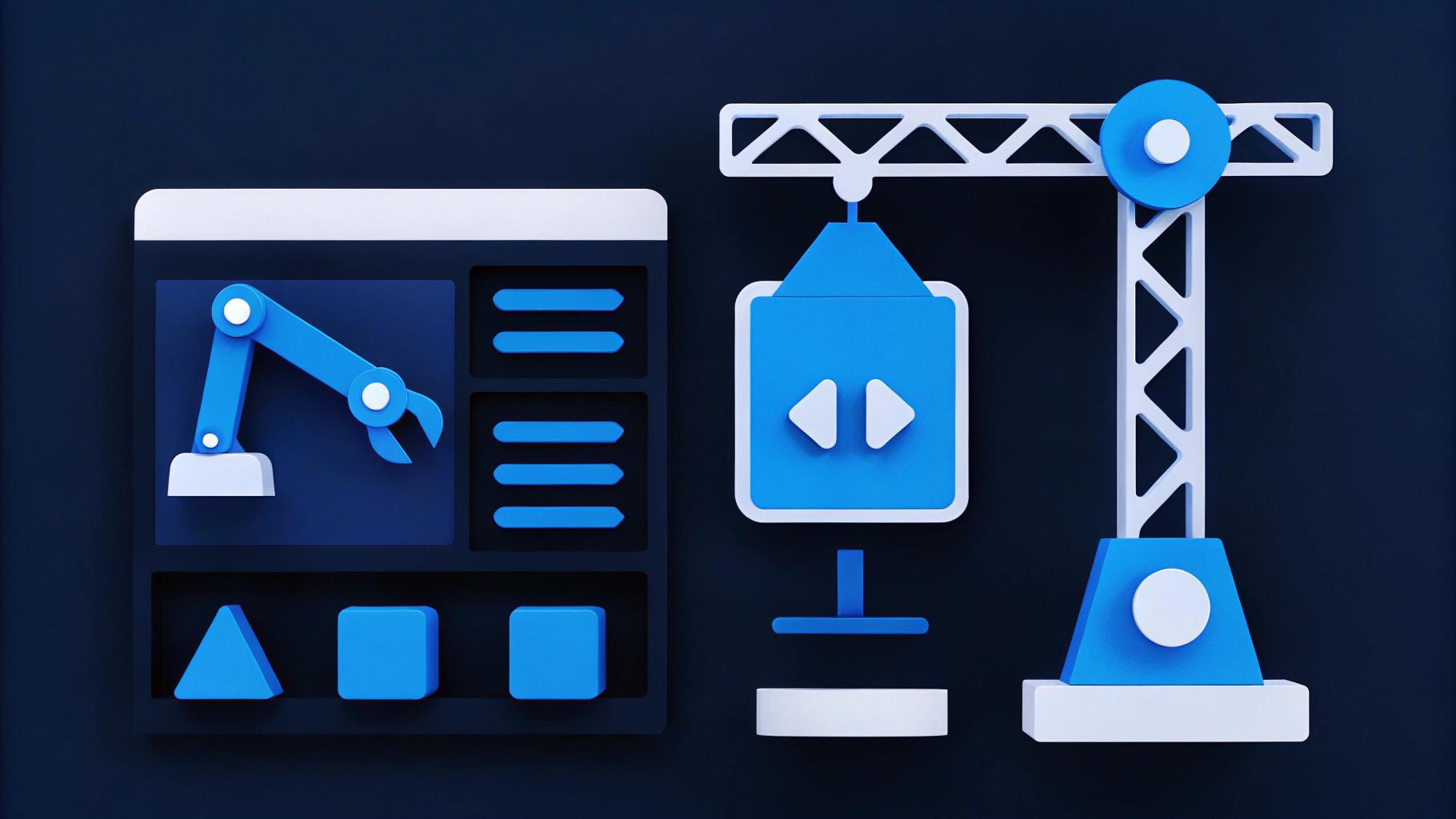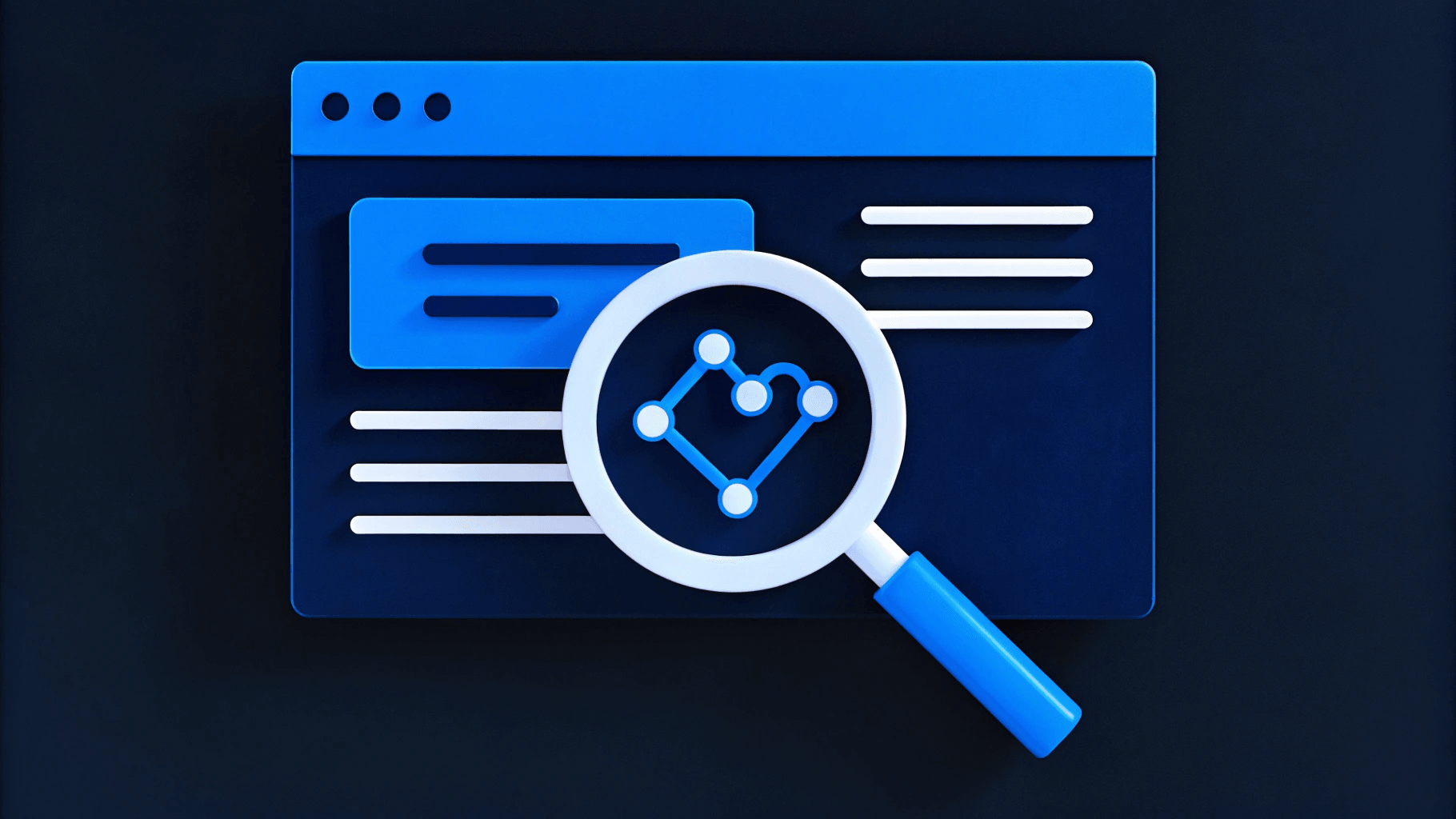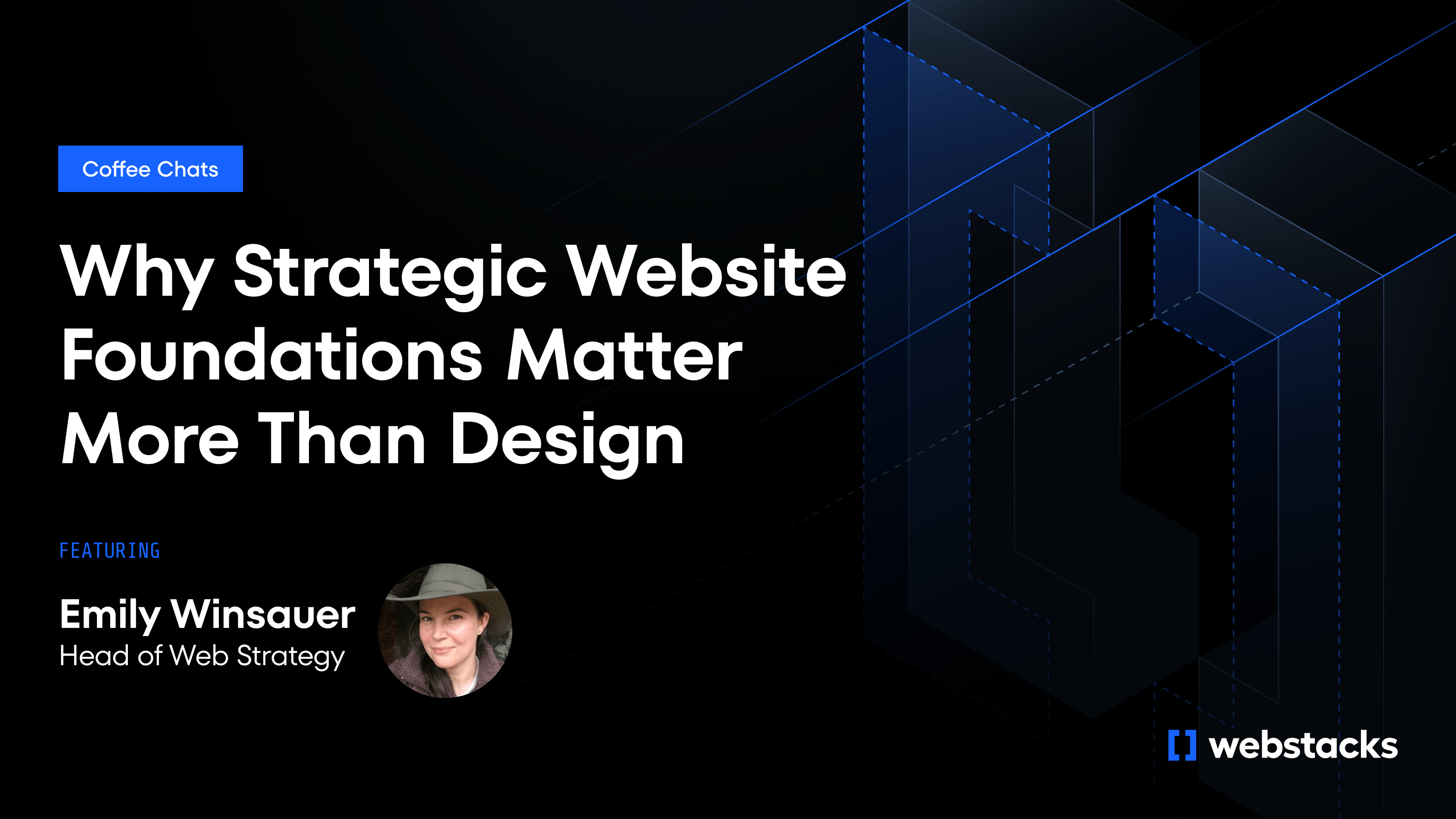Traditional optimization cycles can't keep pace with modern buying behavior. Big redesigns every few years, isolated A/B tests, and manual fixes queued in Jira—these approaches fall short when buyers expect pages to load instantly and content to adapt to their interests.
AI makes continuous refinement possible. Algorithms compress images before they slow a page, pre-render JavaScript for search bots, and surface the exact case study a CFO cares about. Yet the technology delivers only when your site is structured to take advantage of it.
This guide breaks optimization into three connected pillars. You'll see how each pillar accelerates conversions, shortens sales cycles, and lowers acquisition costs. The goal is to help you transform your website from a design artifact into growth infrastructure that compounds results every week, not just with every redesign.
Why Traditional Approaches Fail
Over 20% of mobile sessions end when a page takes longer than three seconds to load, and abandonment rates rise when load times exceed four seconds. If your site drags, even the strongest value proposition never gets a chance to land with busy buying committees.
Under the hood, the problem is usually operational. Legacy release cycles slow everything down. Updates queue behind manual QA, multi-step approvals, or sprint capacity. Even small changes—copy swaps, headline tests, module swaps—can take weeks to ship. In the meantime, SEO rankings slip and pipeline momentum stalls.
Fragmented systems make it harder to course-correct. Content lives in one CMS. Product data, analytics, and CRM signals are stuck in disconnected platforms. Marketing can’t act on behavioral insights, and the site experience remains static. Prospects see outdated messaging, recycled CTAs, or irrelevant landing pages—especially when retargeted across channels.
These gaps directly affect conversion and cost. B2B sites already convert at under 2.5% on average. When cycle times slow and content remains generic, sales timelines stretch, acquisition costs rise, and pipeline coverage suffers.
AI allows teams to break this pattern. Speed optimization tools anticipate user behavior and preload high-priority assets. Server-side rendering solutions convert heavy JavaScript pages into HTML that loads fast and gets indexed properly. Personalization engines combine CRM data with behavioral signals to serve role-relevant proof points the moment a visitor lands.
Periodic redesigns and isolated fixes won’t keep pace with shifting buyer behavior. Static sites fall behind. The rest of this guide covers a three-part framework designed to support faster growth cycles and more scalable execution.
Three Pillars of AI-Powered Website Optimization
AI improves web performance by removing bottlenecks rather than adding tools. When speed, relevance, and modularity are baked into your system, small updates don’t create friction, and growth doesn’t require constant rebuilds.
Pillar 1: Intelligent Performance and Technical SEO Management
Traditional performance work is reactive. Teams log issues after the fact, prioritize them manually, and often ship fixes weeks after the damage is done. AI-powered tooling changes that by acting on live conditions—prioritizing load order, reducing server strain, and accelerating critical assets before users even click.
Platforms such as Nostra AI sit on 310+ edge nodes, learn from real-time traffic, and decide which assets to compress, cache, or stream first. You reduce Time to First Byte without touching code. These automated approaches deliver consistent results:
- Automated image compression serves WebP or AVIF on the fly
- Predictive caching typically uses historical patterns or user behavior rather than live traffic signals; however, real-time data is increasingly used in other optimization systems, such as traffic signal management
- Continuous Lighthouse CI checks tie to Git workflows so slow commits never hit production
- Edge delivery networks route each visitor to the nearest node and pre-warm popular paths
Speed gains only matter if search engines can digest your pages. JavaScript-heavy sites often fail that test. Prerender.io solves it by generating static HTML snapshots for crawlers while visitors still see the dynamic React or Vue experience. The result: faster indexing, cleaner Core Web Vitals, and a site ready for generative-engine optimization.
Your dev team can start immediately. Enable Lighthouse CI, add an AI image-compression plugin, wire up Prerender, and set a performance budget for every template. Avoid the common trap of "CDN-only" thinking—edge caching speeds delivery, but unused CSS, bloated DOM nodes, and unminified scripts still drag you down.
Pillar 2: Behavioral Personalization at Scale
Static persona buckets aren’t built for buying committees. Different stakeholders from the same account (IT, finance, procurement, marketing) arrive with different questions and expectations. When the experience doesn’t adapt, relevance drops and conversion stalls. AI addresses this by interpreting live behavior and responding with targeted content in real-time.
Predictive engines pull signals from your CRM and CDP, then serve role-specific proof points to a procurement lead while showing ROI calculators to finance. They create industry-specific landing pages on demand using firmographic lookups. They recommend content based on live engagement patterns, not preset nurture flows.
Teams that move first see measurable improvements across form conversions, demo bookings, and sales velocity. But without clear rules, these systems introduce risk. Overlapping segments, unclear logic, and biased models can create noise or confuse the user journey.
Start small with one high-traffic page and one variable, such as headline copy or social proof. Expand only after governance is in place. Keep a living priority matrix so new segments are evaluated against existing ones. Run quarterly audits to catch drift, remove stale targeting rules, and verify alignment with buyer behavior. With strong inputs and clear constraints, personalization becomes a revenue driver instead of a content experiment.
Pillar 3: Composable Architecture for Rapid AI Integration
AI tools evolve faster than traditional platforms can adapt. If your architecture isn’t modular, integrating new capabilities often requires full-stack refactors or custom workarounds. Composable systems solve this by organizing functionality into loosely coupled services with clean APIs, so you can adopt and replace tools without disrupting the core.
A composable stack—headless CMS, microservices, and API-first infrastructure—lets you experiment and scale AI without technical overhead. Guides from Webstacks outline the foundation: each business capability is packaged independently, communicates through APIs, and can be swapped or upgraded incrementally.
That structure accelerates AI adoption. You can add an AI-powered meta-tag generator to improve generative engine optimization. Integrate a personalization engine without touching your template system. Begin testing an AI search module in a single sprint, while using automated QA to validate accessibility, performance, and data handling across components.
This flexibility comes with tradeoffs. Each new service introduces potential latency, integration drift, or design inconsistencies. To manage complexity, enforce a shared component library, document versioned APIs, and use automated monitoring to catch misaligned releases early. A modular foundation positions your site to take advantage of new AI tools without rethinking your tech stack every quarter.
Implementation Roadmap: From Strategy to Results
Most AI initiatives fail when there's no operational structure behind the strategy. Teams need sequencing, ownership, and benchmarks to know what's working. This roadmap breaks implementation into focused phases that map to core outcomes: site performance, content relevance, and platform readiness.
A phased implementation keeps teams aligned while reducing risk. It gives each workstream—performance, personalization, and governance—a clear window to execute without blocking others. Instead of rushing to ship AI features, this roadmap helps teams validate infrastructure, track meaningful progress, and build repeatable systems that support scale.
Phase 1: Foundation and Baseline (Weeks 1–4)
During the first month you collect the data that will prove success later. Start by capturing benchmark metrics: Core Web Vitals, current conversion rate, lead quality, and pipeline influenced by the site. Run a technical audit covering hosting, CMS, analytics, and CRM/CDP integrations. This baseline becomes your north star for measuring progress.
Next, align marketing, sales, and engineering on targets, owner responsibilities, and a single KPI dashboard. Without this alignment, even the best technical improvements get lost in organizational chaos.
Verify your prerequisites during this phase. You'll need a content delivery network, GA4 or an advanced analytics suite such as HockeyStack, and reliable CRM/CDP access. These are the foundation everything else builds on.
Phase 2: Performance Optimization (Weeks 5–8)
With baselines set, speed comes first because every later experiment depends on a fast, crawlable site. Deploy a performance monitor to shrink Time to First Byte through smart edge caching and automatic asset compression. The automation here is key; you want fixes happening faster than manual processes allow.
Spin up a Lighthouse CI pipeline to catch regressions before code reaches production. Add prerendering so JavaScript-heavy pages resolve to clean HTML for both search engines and LLMs. Set performance budgets by page type, such as marketing, blog, pricing, and fail builds that exceed them. This discipline prevents the gradual slowdown that kills conversion rates over time.
Phase 3: Personalization Implementation (Weeks 9–12)
Once speed and crawlability are solid, turn to individualized experiences that convert visitors into qualified opportunities. Input CRM and CDP data into the website so the personalization engine can call firmographic and behavioral attributes in real time. This connection transforms static pages into dynamic experiences.
Launch one high-traffic test first—serve industry-specific testimonials on the homepage, for example. Real-time personalization lifts conversions for 88% of companies, according to research. Use keyword clustering tools designed for content gap analysis and drafting variant copy, as Whatagraph's primary focus is on SEO reporting and analytics dashboards.
Document governance rules that resolve conflicts when a visitor qualifies for multiple segments. Clear prioritization prevents the chaotic rollouts highlighted in UnboundB2B's cautionary post. Finish the quarter with at least one statistically significant win and a repeatable process for the next batch of tests.
Phase 4: Optimization and Scaling (Ongoing)
The final phase establishes weekly habits that keep gains compounding. Maintain an experiment backlog that feeds two-week sprints. Prioritize items with clear hypotheses and measurable upside. Schedule a monthly governance review where oversight tools flag drift in design tokens, security headers, or content standards across the component library.
Hold cross-functional retros where marketing, product, and rev-ops compare website metrics to pipeline velocity and CAC. Insights here tighten the feedback loop between site changes and revenue impact. Train teams quarterly. Short workshops on topics like prompt engineering or schema markup keep skills current without derailing day-to-day work.
Transform Your Website into Growth Infrastructure
Your website should operate like a system, not a series of one-off pages. It needs to respond quickly to product launches, campaign pivots, and changes in buyer behavior. The fastest path is treating your site as modular infrastructure—built on a composable stack that supports real-time optimization, AI integrations, and rapid iteration without introducing chaos.
This isn’t theoretical. When Webstacks rebuilt UpKeep’s site using a composable architecture, its team went from shipping landing pages in weeks to shipping in hours. That agility led to a 40% lift in form submissions and faster deal cycles across segments.
Structure is what turns speed into sustainable growth. With performance guardrails, component-level governance, and a clean design system, your team can launch confidently at scale—without sacrificing quality or consistency.
Talk to Webstacks to make your site work like part of your go-to-market engine.




